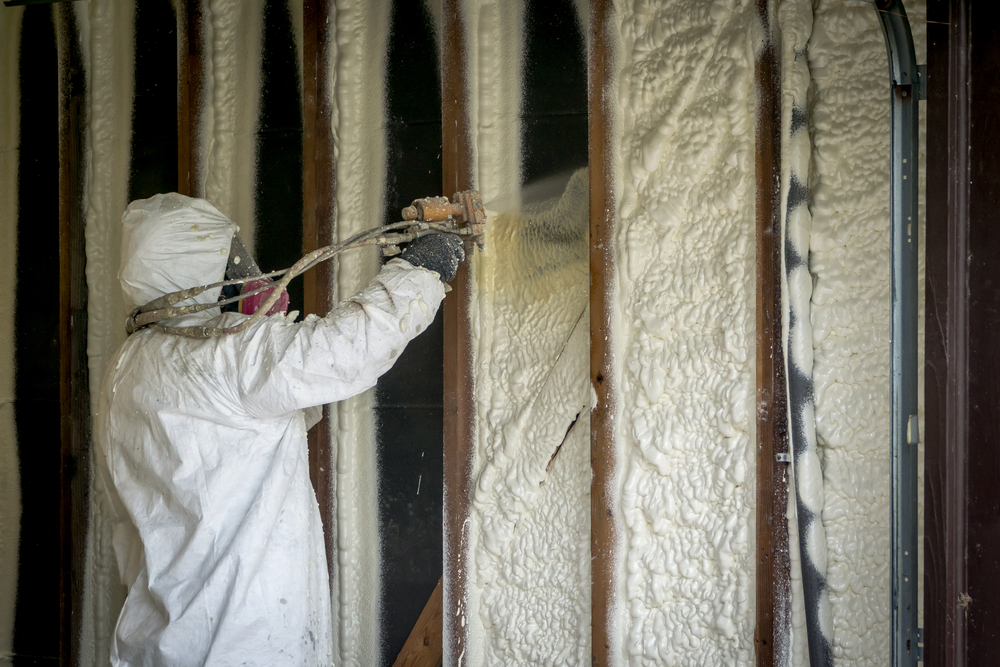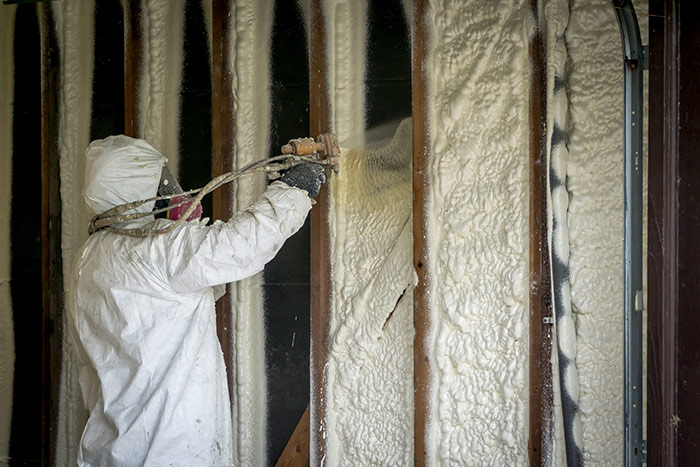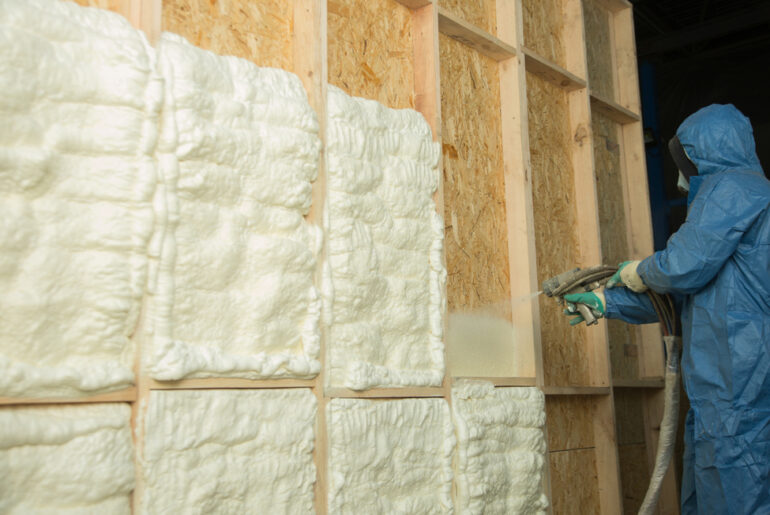Basic knowledge about the spray foam installation process is not enough.
DIYers need to know tips and tricks too to get the most out of the insulation material. And it includes ways to shorten curing time, safety measures during the process, correct storage temperature, the importance of expiration date, and many more. Otherwise, it could reduce the insulation material’s efficiency or jeopardize your family’s safety.
The article covers all tips and tricks homeowners need to be wary of when installing that material. Let’s start.
1. Check the Expiration Date
Spray polyurethane foam, just like food and other products, has an expiration date that must be checked first before using it. Professional installers recommend using it while it is fresh to get the most out of it.
Using it past the suggested date can result in poor performance in terms of R-Value. It may not expand to its usual size as well. Expired spray foam becomes too sticky and drippy which affects its ability to expand. It may also start a fire, although such a case is rare.
2. Mind The Density
There are different types of spray foam available today, and each serves varying purposes. It is why it is crucial to consider the location and which type of spray foam is appropriate to install.
- Low density. Available in open-cell foam only, low density R-Value starts at 3.6 per inch. It is typically used to fill interior cavities but can also be installed on unvented attics.
- Medium density. Medium density spray foam’s R-Value starts at 5.7 per inch and is available in closed-cell foam only. It is often used for continuous insulation, unvented attics, and to fill interior wall cavities.
- High density. High density spray foam’s R-Value starts at 5.5 per inch and is available in closed-cell foam only. It is often used in roofing and exterior applications.
3. Maintain Even Consistency
Uneven consistency makes spray foam challenging to install in cold temperatures and during winter. With that, insulation experts recommended warming up the chemicals thoroughly.
Spray polyurethane foam is made by combining two separate chemicals labeled “A” and “B” tanks. These solutions differ in consistency and flow. The “A” tank has a consistency and texture similar to milk, while the “B” tank has a texture similar to molasses.
To achieve an even consistency for both solutions, the “B” tank must be warmed up until its flow is similar to that of tank “A.” You can do that by storing the drum inside a warm or heated room with temperatures not below 70 Fahrenheit. You can use a warm blanket too to speed up the process. Storing the tank in an insulated box with a light bulb can also help warm the solution.
4. Store Solutions At the Correct Temperature
Spray foam is susceptible to disintegration and shrinking when applied in cold temperatures as well as during the winter season. It is why insulation experts recommend warming up the chemicals at the correct temperature when working during cold months.
Professionals recommend storing it in a place with a temperature between 70 to 80 degrees Fahrenheit. You can lay heated blankets on top of each drum to warm the solutions up. Placing a thermometer on the rig’s wall can also help monitor the temperature.
5. Combine Spray Foam with Fiberglass
Known as the “flash and batt,” it is a budget-friendly technique that combines spray foam and fiberglass insulations. It is a method used to specifically help homeowners save money and, at the same time, enjoy both insulation material’s insulation and air-sealing benefits. Contractors use it to insulate and air-seal walls, floors, and attics.
The method is installed by spraying one to two inches of spray foam insulation which serves as an air seal. A batt of fiberglass will then be added on top of it for insulation.
6. Use Spray Foam to Block Rodents and Pests
Spray foam also serves as a pest and rodent barrier. Its pliable and lightweight composition is perfect to seal up hard-to-reach cavities that pests like rodents, cockroaches, ants, and spiders use to enter the house. It is excellent to fill cracks and gaps in crawl spaces, basements, attics, garages, and other spaces where pests can use to penetrate the house or building. There are expanding spray foams that are specifically formulated to chemically repel insects too.
But keep in mind that the insulation material will only work if no rodents or pests are living in your house. As such, it is best to let an exterminator check your house first.
7. Do the Picture Framing Technique
Also known as “lifts,” the picture framing technique is a spray foam insulation method used to prevent gaps and voids during the installation process.
The process involves spraying one shot—or half-inch layer—of spray foam first before filling the wall cavity, which will then expand up to one inch. It is applied to the perimeter of either an attic rafter cavity or stud wall to fill in gaps and voids.
Doing this method ensures that the foam will completely penetrate the empty spaces between the stud and the sheathing. It also prevents possible bulges in the sheathing which often happens when the first layer of foam is immediately covered with another thick layer of spray foam.
8. Apply Spray Foam Using Gun
While it is cheaper to apply spray foam straight out of the can, investing in a spray foam gun can make the installation process much easier and faster. It gives you the option to adjust the amount, as well as the size, of the solution you need to apply. It provides better control and access thanks to the gun’s rigid tip.
The spray foam gun is low maintenance as well. No need to worry about whether you must clean it regularly or not.
9. Dampen the Surface for Quick Curing
The curing time for spray foam ranges between 8 to 24 hours. In some instances, that could be too long. If you want to shorten it, professionals suggest misting the area where the insulation will be applied.
Spray foam requires moisture to completely expand and cure. Spraying a small amount of water on the surface, however, speeds up the curing time. It is particularly handy when applying it on dry wood and other dry surfaces. Humidity can also prolong the curing time, and misting the surface can help speed up the process.
Be careful not to spray too much water though as spray foam doesn’t stick well on wet surfaces.
10. Wear Gloves
Installing spray foam can get messy and takes some time to wear off. It is why professionals recommend using proper clothing such as gloves when applying it. You can use disposable nitrile gloves. Make sure to wear old clothes too.
11. Don’t Use Spray Foam Near Open Flame or Spark
Spray polyurethane foam is a potential fire starter. The compressed gas inside each can of insulation material is highly explosive and using it incorrectly can cause a fire. Applying in closed-in areas such as crawl spaces and under cabinets, for example, could prompt rapid gas accumulation and could eventually ignite a fire.
During the installation process, make sure that the area is well-ventilated to help disperse the gas. You can open all windows if there are no fans available. Do not smoke or light candles too. Do these tips until the material is fully cured, which can take up to 24 hours.
Installing it near or around fire-prone recessed can lights and outlets are also extremely dangerous. Professionals recommend not using it as it can trap heat and increase fire risk.





